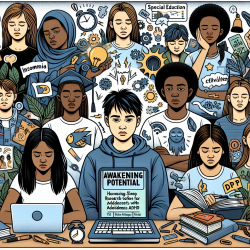Understanding Sleep Disturbances in Adolescents with ADHD
Adolescence is a critical period marked by significant biological and psychosocial changes, which can exacerbate sleep disturbances. This is especially true for adolescents with Attention-Deficit/Hyperactivity Disorder (ADHD), a condition already linked to a range of sleep issues. Recent research by Gruber et al. (2023) sheds light on the prevalence and characteristics of sleep disturbances in this population, offering valuable insights for practitioners.
Key Findings from the Research
The study conducted by Gruber et al. aimed to compare the prevalence of Delayed Sleep Phase Syndrome (DSPS) and insomnia in adolescents with ADHD against a control group. The researchers utilized both subjective reports and objective measures, such as actigraphy, to assess sleep patterns.
- Approximately 33.33% of adolescents with ADHD and 27% of control adolescents were at moderate/high risk for DSPS.
- Subthreshold insomnia was significantly more prevalent in the ADHD group (46.2%) compared to controls (15.2%).
- Clinical insomnia was found in 10.3% of the ADHD group and 9.1% of the control group.
Interestingly, the study revealed that adolescents with high levels of subjective sleep disturbances had poorer objectively measured sleep, indicating a consistency between subjective and objective measures.
Implications for Practitioners
For practitioners working with adolescents, particularly those with ADHD, integrating sleep assessments into their practice is crucial. Here are some practical steps to consider:
- Screen for Sleep Disturbances: Incorporate questions about sleep patterns and disturbances into routine assessments. Use validated tools like the Sleep Disorders Inventory for Students – Adolescents (SDIS-A) and the Insomnia Severity Index (ISI).
- Utilize Objective Measures: Consider actigraphy to objectively assess sleep patterns, especially for adolescents reporting significant sleep issues.
- Address Modifiable Behaviors: Educate adolescents and their families about the impact of behaviors such as late-night screen use on sleep quality.
Encouraging Further Research
While this study provides valuable insights, further research is needed to explore the impact of sleep disturbances on daytime functioning and ADHD symptoms. Practitioners are encouraged to stay informed about ongoing research and consider participating in studies to contribute to the growing body of knowledge.
To read the original research paper, please follow this link: Sleep Disturbances in Adolescents with Attention-Deficit/Hyperactivity Disorder.










